Oculus has finally taken the wraps off of Rift S, its first PC VR headset release in three years. But there’s a reason the company is calling this Rift S and not Rift 2; the changes are mostly for the better, but not improvements across the board.
This week at GDC, during a special Oculus media event, we got our first look at the Rift S, the company’s Rift-replacement that’s clearly designed for ease of use and affordability; the Rift S will launch in Spring and be available for $400, and is of course fully compatible with the existing Rift library.
The high-level look is that Rift S moves to an inside-out tracking system (in lieu of the more cumbersome external sensors of its predecessor), gets a small increase in resolution, and an ergonomic redesign. But there’s a few changes that don’t feel like clear-cut improvements over the original Rift.
Visuals
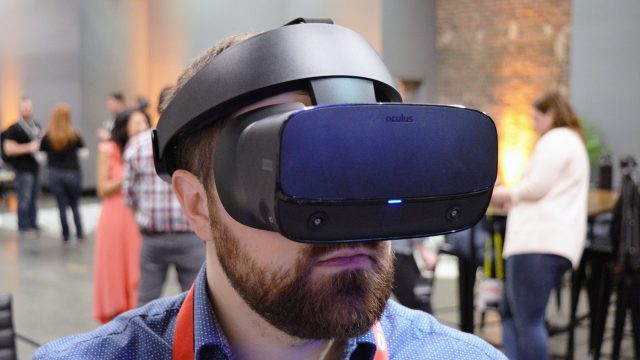
Resolution
Of primary interest is what things look like through the Rift S. Here’s the skinny: Rift S now uses a single display which amounts to 1,280 × 1,440 per-eye, a moderate increase (1.4 times the total pixels) over the original Rift’s 1,080 × 1,200 per-eye resolution. But, the new display is LCD instead of OLED, which brings a handful of benefits like a better fill-factor (less unlit space between pixels) and less mura, but often lacks the rich colors and contrast of OLED. That said, Rift S’s LCD display seems quite up to the task, despite running at 80Hz compared to the Rift’s 90Hz.
Clarity and Field of View
With the bump in resolution alone you get a bit better fidelity and a bit less screen door effect, but with the improved fill-factor of LCD, the screen door effect (unlit space between pixels) sees a pretty solid reduction which makes the Rift S clarity seem better than the moderate change in resolution would suggest.
With a “slightly larger” field of view—according to Oculus, which wouldn’t provide a specific FOV measurement—and minimal mura, what you see inside the headset looks a lot like the original Rift but with better clarity. The screen door effect is less distracting, and it’s easier to get lost in the content.
Refresh Rate & Lenses
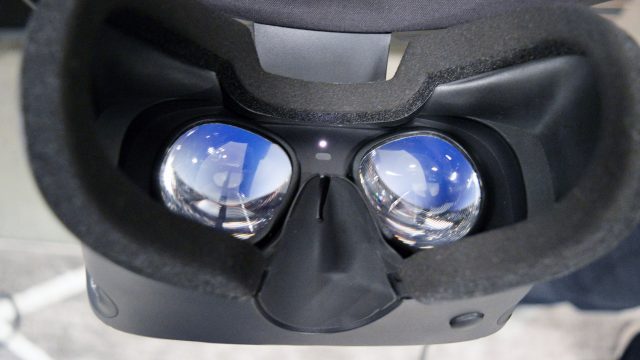
On the 80Hz display, Oculus says that one reason for making it lower than the Rift’s 90Hz display was to ensure they could maintain the same recommended PC specifications as the original headset (to avoid fragmentation). That said, I don’t think I’d have any chance of seeing the difference between the Rift S at 80Hz and the Rift at 90Hz, though anyone who is highly sensitive to flicker might be able to feel the difference in excessively bright scenes.
As for the new lenses in Rift S, it’s too early for me to say with certainty to what extent they’ve changed things, but assuming they’re similar to the improved lenses in Quest and Go (as Oculus says), then I’d expect a larger sweet spot. These are still Fresnel lenses though, so you can expect some god rays, though they have likely been reduced to a similar extent as Quest and Go. Ignore anyone telling you “there’s no god rays” (which I hear all the time on headsets where this is not the case); god rays are most visible with high contrast scenes and you aren’t likely to notice them otherwise. However, in my time with the Rift S so far, I didn’t get to choose what content I was looking at, so I didn’t get to pull up a good test for god rays.
No Hardware IPD Adjustment
Because Rift S is using a single display, it has no hardware IPD adjustment (unlike the original Rift) to change the distance between the lenses to match the distance between your eyes. A proper IPD setting is important for visual comfort (and makes it easier to achieve maximum panel utilization). While IPD on the Rift S can be adjusted, to an extent, in software, users on the outer limits of the IPD range might be left wanting. Oculus hasn’t specified what they consider to be the headset’s acceptable IPD range.
Passthrough+
Oculus is talking up the new passthrough capability of the Rift S, which allows users to ‘see through’ their headset by piping the video feed from the on-board cameras into the displays. The company says they’ve paid special attention to make sure the feed is low latency, high framerate, and stereo-correct, which is why they’ve calling it ‘Passthrough+’.
Passthrough+ was unfortunately not ready for testing during my Rift S demo, but Oculus says that users will be able to set up their Guardian playspace boundaries by using passthrough+. Instead of tracing the boundary using a controller while looking at their computer monitor, users will see their environment directly via passthrough and ‘trace’ their boundary right onto the floor (a smart improvement over the prior method).
– – — – –
All things considered, for those who are used to Oculus’ first PC VR headset, Rift S’s visuals aren’t going to feel like a step into next-gen, but they are an improvement.
Head & Controller Tracking
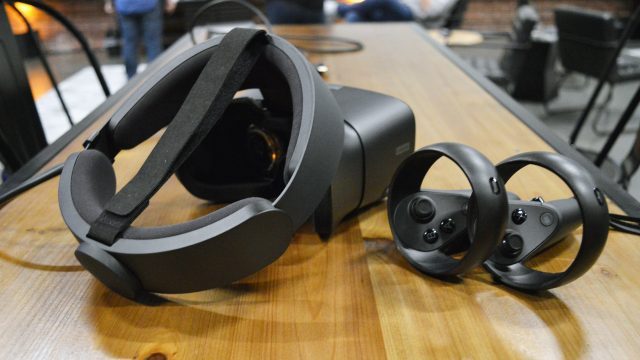
Perhaps the single largest point of difference between Rift S and the original Rift is the tracking system.
Rift ‘Constellation’ Tracking (outside-in)
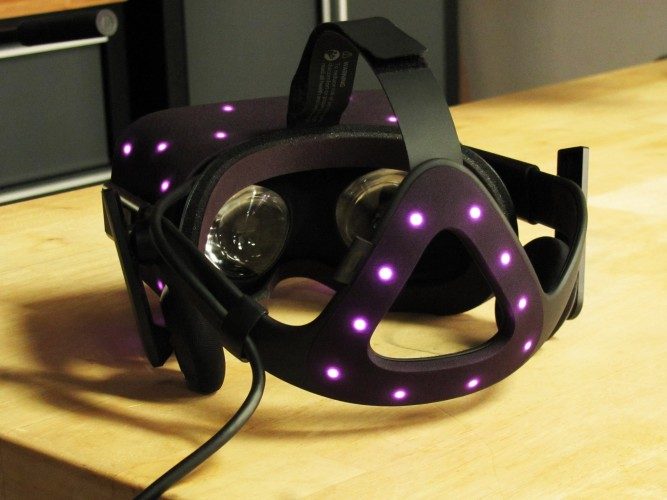
The original Rift uses an ‘outside-in’ tracking system (called Constellation) that relies on external cameras which look at glowing lights on the headset and controllers (made invisible by using infrared light) to determine the position of the devices. This has shown to be a highly performant approach, but adds complexity to the setup because the external sensors need to connect to the host PC and carefully placed. And unless users are willing to run a USB cable across their room for a ‘room-scale’ setup, the default Rift tracking setup restricts users to ‘forward facing’ gameplay.
Rift S Insight Tracking (inside-out)
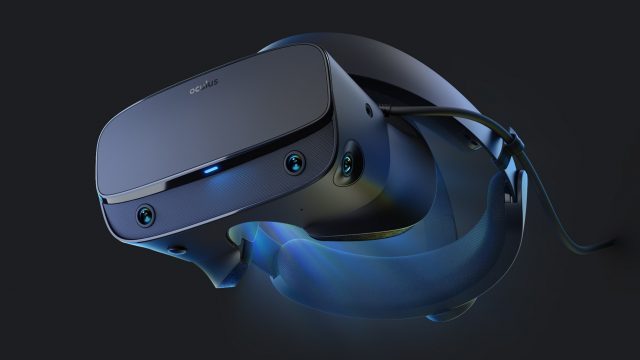
Rift S, on the other hand, uses an ‘inside-out’ tracking system (called Insight) which places five cameras onto the headset itself. The cameras look at the world around the user, and computer vision algorithms use the information to determine the position of the headset. The on-board cameras also look for glowing lights on the controllers (also invisible via infrared) to determine their location relative to the headset. An inside-out system like this is vastly more complex than the outside-in system of the Rift, and it’s taken companies like Oculus several years to achieve the robustness and performance needed to make it work for a VR headset.
Room-scale Out of the Box
The result, however, means that Rift S is much easier to set up, and now has room-scale tracking out of the box, which means players can be more immersed in some games by walking around larger spaces and turning around naturally instead of relying on stick-based turning. Depending upon the game, having full 360 room-scale tracking can really enhance immersion levels (Lone Echo comes to mind for me).
The actual camera layout on Rift S is similar to Quest but has five cameras instead of four, and uses a different configuration. Instead of cameras mounted at the corners of the headset’s front panel, there’s two cameras toward the bottom of the front panel which face forward, one camera on the left and right of the headset which aim slightly downward, and one camera on top of the headset which faces the ceiling.
Latency & Accuracy
From my hands-on time so far, Rift S tracking feels nearly identical to Rift in latency and accuracy, though it might have a bit more jitter. In my time with the headset I saw zero unexpected/sudden head movements, and latency on both my head movements and hands felt very tight.
However, when moving my hands especially close to the headset (like when bringing my controller close to my face to look at the buttons) they would sometimes get a little bit wonky, which makes me think that there’s something of a dead zone for the controllers if they get too close to any one camera.
Controller Caveats
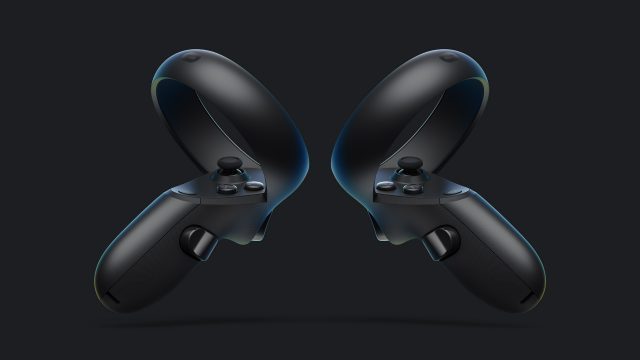
This might not often be a practical issue, but you can imagine that it could pose a problem in certain game interactions like, for instance, a bow game where your string hand naturally pulls near to one side of your head before releasing, or a game where you bring objects near your face (like putting on a hat, eating a piece of food, or putting on glasses). Developers who still want to use these interactions may need to make case-by-case adjustments to make sure they work well.
Outside of the ‘very near the headset’ bubble, controller tracking seems to work very well for a broad range of interactions, and tracking coverage for the controllers feels massively improved over the inside-out tracking on Windows VR headsets. Of course this comes with the caveat that it’s possible to move the controllers outside of the field of view of the cameras. If you turn your head one way and hold your arm out the other way, you might end up breaking line of sight between the cameras and the controller with your body.
The system recovers easily if this happens momentarily because positional estimation is still ongoing via an IMU, but if it happens for extend periods (like when a member of the press intentionally puts their hands behind their back to test the controllers) the controllers eventually freeze in place and stay there until their position is reacquired by the cameras.
Oculus readily admits that some poses won’t work, and that will impact some content over others, but they say they’ve designed the system to offer “maximum compatibility” for existing content.
Over time it’s likely that developers will gain a keen sense of problematic poses and interactions, and either design fixes that make tracking occlusion invisible to the play, or avoid those poses outright.
– – — – –
Overall, Insight feels like a clear win for the Rift S in terms of ease of use and the addition of room-scale tracking by default—and is notably better in terms of controller tracking coverage than Windows VR—but doesn’t come without a few caveats. So far the problematic edge cases for controller tracking seem fairly innocuous, but this will be deeply content-specific.





